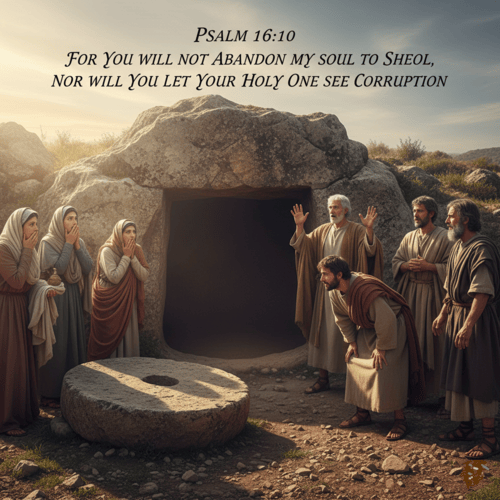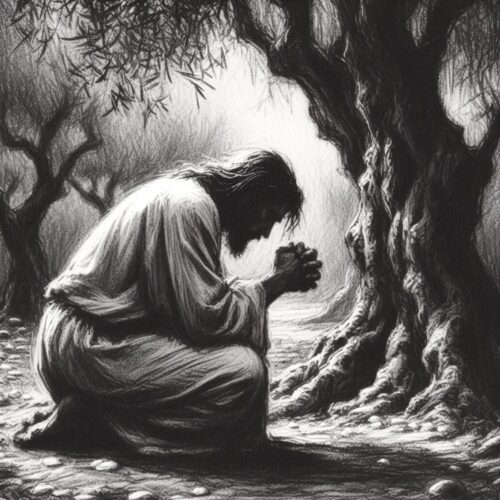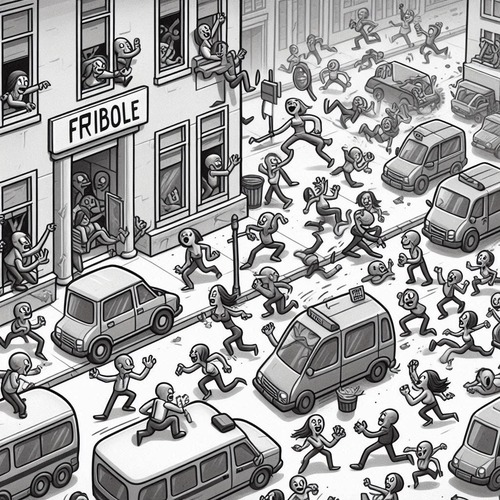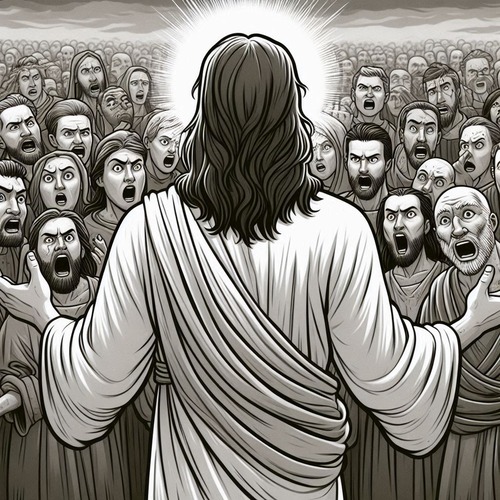Gethsemane’s Mystery: Why Did Jesus Sweat Blood?
In the quiet darkness of the Garden of Gethsemane, hours before His crucifixion, Jesus experienced intense anguish. Luke records this remarkable phenomenon: “And being in agony He prayed more earnestly, and His sweat became like great drops of blood falling down to the ground” (Luke 22:44). This extraordinary event, known medically as hematidrosis, serves as a window into the unfathomable depth of Christ’s suffering on our behalf…
WHAT DOES JESUS’ AGONY REVEAL?
Hematidrosis is a rare but documented medical condition where a person sweats blood. Under conditions of extreme physical or emotional stress, tiny blood vessels beneath the skin can rupture, mixing blood with sweat. Modern medicine has recorded cases of this phenomenon, typically associated with individuals facing imminent death or intense fear. That Jesus experienced this condition reveals the severe physiological impact of the spiritual and emotional burden He bore that night.
The medical condition also powerfully refutes a common but dangerous misconception: that God the Father somehow numbed or shielded His Son from the full experience of suffering. This rare but documented condition, where tiny blood vessels rupture under severe emotional stress, demonstrates Jesus experienced the complete spectrum of human psychological and physical torment.
The incident reveals Jesus faced His coming crucifixion with all His human faculties fully engaged. Clearly, He experienced every quantum of dread and anguish that any one of us would feel—and more, given His knowledge of the spiritual suffering to come. This medical condition confirms what JI Packer emphasises: “Christ’s suffering was not theatre; it was terrible reality. Every nerve ending was alive to pain, every emotional capacity was intact to experience torture.”
The Weight of Divine Wrath
To understand the depth of Christ’s agony in Gethsemane, we must grasp what He faced. This wasn’t merely the anticipation of physical torture, though that alone would be terrifying. Rather, Jesus confronted what Reformed theologians call the “cup of God’s wrath”—the full justice of God against human sin. As our substitute, Christ prepared to bear the infinite weight of divine judgment against all the sins of His people, past, present, and future.
The prophet Isaiah foretold this moment: “Yet it pleased the LORD to bruise Him; He has put Him to grief” (Isaiah 53:10). In Gethsemane, Jesus faced the imminent reality of being made “sin for us, who knew no sin, that we might become the righteousness of God in Him” (2 Corinthians 5:21).
This wasn’t mere anticipation of physical torture, though that alone would be terrifying. Rather, Jesus confronted what John Owen describes as “the curse of the law, the wrath of God, and the punishment due to our sins.” As our substitute, Christ prepared to bear the infinite weight of divine judgement against all the sins of His people—past, present, and future.
The Three Prayers: A Window into Christ’s Soul
Three times Jesus prayed, “Father, if it is possible, let this cup pass from Me; nevertheless, not as I will, but as You will” (Matthew 26:39). The prayer reveals several profound truths:
- Christ’s true humanity: His natural recoil from suffering demonstrates He was fully human, with genuine human emotions and desires.
- His perfect submission: Despite His human will’s natural resistance, Jesus perfectly submitted to the Father’s will, demonstrating unwavering obedience.
- The necessity of the cross: That the cup did not pass from Him confirms there was no other way to secure our salvation.
Matthew Henry writes of Christ’s threefold prayer: “His agony in the garden was a specimen of His sufferings, and an entrance upon them. He prayed that, if possible, the cup might pass from him. But he also showed his perfect compliance with, and submission to, the Father’s will. As Man he feared death; but as God-man he overcame that fear.”
The Sleeping Disciples and the Solitary Saviour
While Jesus wrestled in bloody sweat, His disciples slept nearby, blissfully oblivious to the cosmic battle unfolding. This detail powerfully illustrates Christ’s isolation in His suffering. BB Warfield captures this moment: “In Gethsemane, we see the Father stepping back, as it were, leaving the Son to face the horror alone. Here begins that terrible isolating that would reach its climax in the cry of dereliction on the cross.”
This detail powerfully illustrates Christ’s isolation in His suffering. John Calvin notes in his Commentary on the Synoptic Gospels: “He had to tread the winepress alone, and of the people there was none with him… This was part of His humiliation, that He was deprived of all human consolation.” So Jesus had to tread the winepress alone. No one could share or lighten this burden—it was His unique mission as the God-Man mediator.
The Active Obedience of Christ
Reformed theology emphasises both Christ’s active and passive obedience. In Gethsemane, we see both: His active obedience in choosing submission to the Father’s will, and His passive obedience in accepting the suffering ordained for Him. This moment exemplifies what theologians call Christ’s voluntary humiliation—He willingly embraced what He could have refused, demonstrating perfect righteousness even in extreme distress.
Implications for Believers
This extraordinary manifestation of Christ’s suffering holds several implications for believers today:
- The Severity of Sin: The intensity of Christ’s anguish reveals sin’s true horror and the magnitude of God’s justice.
- The Depth of God’s Love: That Jesus willingly endured such torment demonstrates the immeasurable love of God for His people.
- Comfort in Suffering: Believers facing their own trials can find comfort knowing Christ understands human anguish at the deepest level.
- Pattern for Obedience: Jesus’ submission to the Father’s will provides a model for Christian obedience in difficult circumstances.
The Comfort of Christ’s Blood
The blood-tinged sweat of Gethsemane foreshadowed the blood that would flow at Calvary. Both point to the physical and spiritual reality of Christ’s atoning work. As Charles Spurgeon observed, every drop of Christ’s blood, whether in Gethsemane or on the cross, was precious and purposeful in securing our redemption.
Conclusion: Why Did Jesus Sweat Blood?
The account of Jesus sweating blood in Gethsemane is a testament to both the horror of sin and the magnificence of divine love. It reveals Christ as our perfect High Priest who sympathises with our weaknesses, having experienced the depths of human anguish. Yet it also shows Him as the perfect Son, whose unwavering obedience secured our salvation.
As we contemplate this scene, we’re called to deeper worship, stronger faith, and more faithful obedience. The drops of blood in Gethsemane remind us that our salvation, though free to us, came at an incalculable cost to our Saviour.
John Murray eloquently summarises it all for us, in Redemption: Accomplished and Applied: “The garden of Gethsemane shows us that our salvation was accomplished not merely through Christ’s physical death, but through His willing submission to the entire cup of God’s wrath. Each drop of blood-tinged sweat testifies to the completeness of His identification with our fallen condition and the perfectness of His redemptive work.”
Why Did Jesus Sweat Blood?—Related FAQs
- Did Jesus’ prayer “Let this cup pass from me” show a lack of faith or unwillingness to follow God’s plan? Sinclair Ferguson addresses this powerfully: “Far from showing weakness, Christ’s prayer demonstrates perfect righteousness. As the sinless One, He naturally recoiled from bearing sin. His holy nature’s revulsion to becoming sin for us actually validates His perfect qualification to be our substitute.” This prayer reveals both Christ’s true humanity and His unwavering commitment to the Father’s will.
Why did Jesus need to pray three times? Didn’t the Father hear Him the first time? As DA Carson explains: “The threefold prayer pattern shows us not uncertainty, but the profound working out of submission. Like a prism refracting light, each prayer reveals different aspects of Christ’s perfect obedience.” In the first prayer, we see Christ’s complete honesty in expressing human dread; in the second, His growing resolution as His human will aligns with the divine purpose; and in the final prayer, His triumphant surrender—wherein dread is fully transformed into determined acceptance. Each repetition thus reveals a deeper dimension of what perfect submission to God’s will entails: moving from honest struggle through purposeful acceptance to complete embrace of the Father’s plan.
- Why was the anticipation of the cross so terrifying to Jesus when many martyrs have faced death calmly? John Owen provides crucial insight: “The martyrs faced mere human death, while Christ faced the full cup of divine wrath. They experienced God’s presence in their suffering; He would experience God’s abandonment. No creature, angelic or human, could fully comprehend the horror of what He alone could bear—the infinite weight of God’s judgement against sin.”
- If Jesus is God, why did He need angels to strengthen Him (Luke 22:43)? Louis Berkhof addresses this in his “Systematic Theology”: “The strengthening by angels demonstrates the reality of Christ’s voluntary self-emptying (kenosis). In His human nature, He deliberately chose to experience human weakness and need, refusing to draw upon His divine powers to ease His suffering. This strengthening came not to diminish His anguish but to enable Him to fully endure it.”
Why did this intense suffering happen in a garden? Is there theological significance to the location? Geerhardus Vos draws a compelling parallel: “The garden setting deliberately echoes Eden, where the first Adam failed in a garden of delight. Now the last Adam conquers in a garden of suffering. Every detail of redemption is carefully choreographed—the garden location shows Christ reversing the curse that began in a garden.” The garden setting thus serves as a powerful bookend to the story of human redemption.
Why Did Jesus Sweat Blood?—Our Related Posts
Editor's Pick

Why Do People Hate the Doctrine of Election?
…WHEN THEY REALLY SHOULDN’T Few Bible doctrines provoke stronger reactions than election. The idea that God chose some for salvation [...]

The Doctrine of Providence: Does God Really Govern All Things?
You’re sitting in the doctor’s office when the diagnosis lands like a thunderclap. Your mind races: Why this? Why now? [...]

No Decay, No Defeat: What It Means That Christ’s Body Saw No Corruption
On the Day of Pentecost, Peter stood before thousands and made a startling claim: David's body decayed in the tomb, [...]
SUPPORT US:
Feel the Holy Spirit's gentle nudge to partner with us?
Donate Online:
Account Name: TRUTHS TO DIE FOR FOUNDATION
Account Number: 10243565459
Bank IFSC: IDFB0043391
Bank Name: IDFC FIRST BANK






